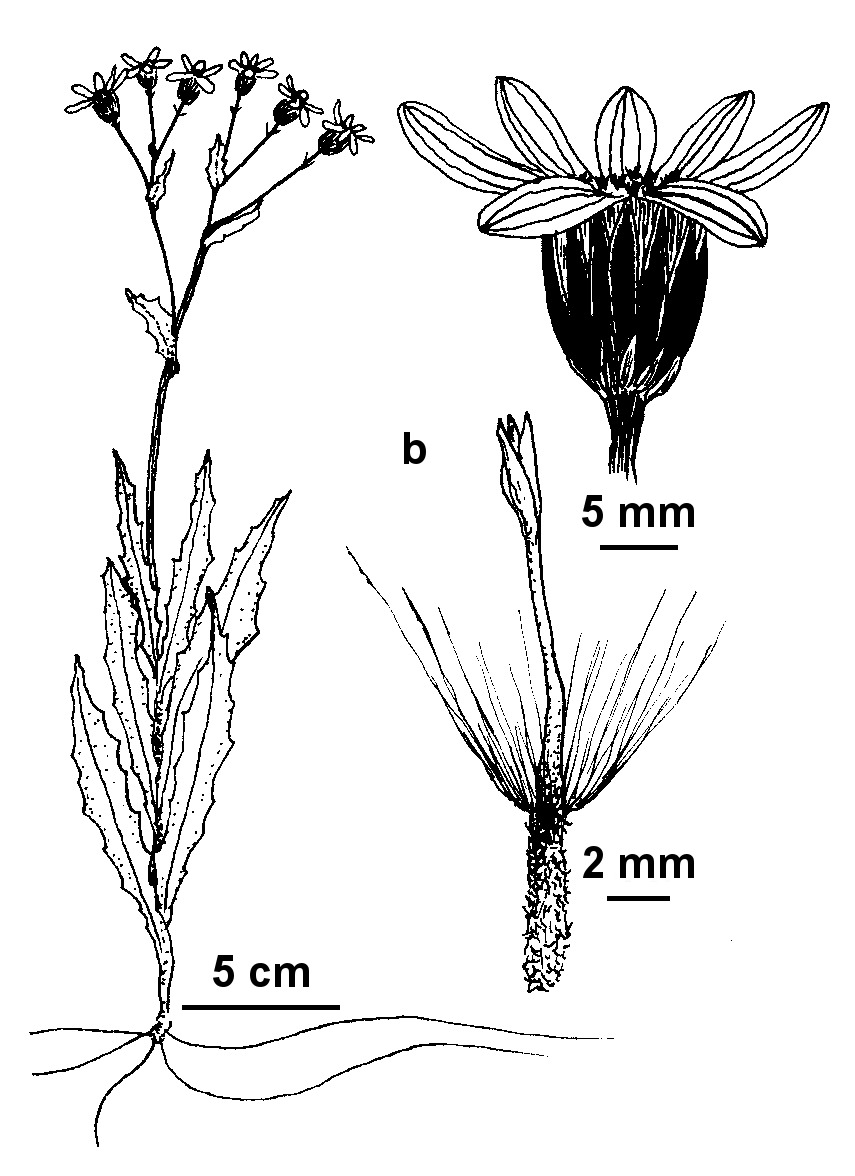Lordhowea pilosicrista
(I.R.Thomps.) Schmidt-Leb.Erect, simple or few-branched, glabrous, sometimes glaucous, somewhat fleshy perennial to c. 0.8 m high. Leaves sessile, the lower narrow-obovate to oblanceolate, dentate to lobate in distal half, to 17 cm long, 7–30 mm wide; stem leaves narrow-elliptic to lanceolate becoming strongly triangular-lanceolate upwards, cuneate to cordate and often amplexicaul at base, coarsely dentate distally to entire, to 12 cm long, 40 mm wide. Inflorescence of 2–8(–15) capitula; peduncles hollow, expanded somewhat just below capitula; capitula radiate; involucre campanulate, 6–10 mm long; bracts 12–16; bracteoles 3–6. Ray florets 6–10, yellow, ligules 10–20 mm long; disc florets 30–55, yellow. Cypselas cylindric, 4–5 mm long, brown, with pairs of ribs strongly raised to form several ridges, papillose-hairy in lines within ridges; pappus of white minutely scabrid or nearly smooth barbellate hairs 5.5–7 mm long, persistent. Flowers Aug.–Oct.
LoM, MuM, Wim, GGr. Also SA. Grows on plains and sand hills, in woodland and low woodland, in the north-west, extending south to the Grampians. Usually appears after fire.
 Spinning
Spinning
